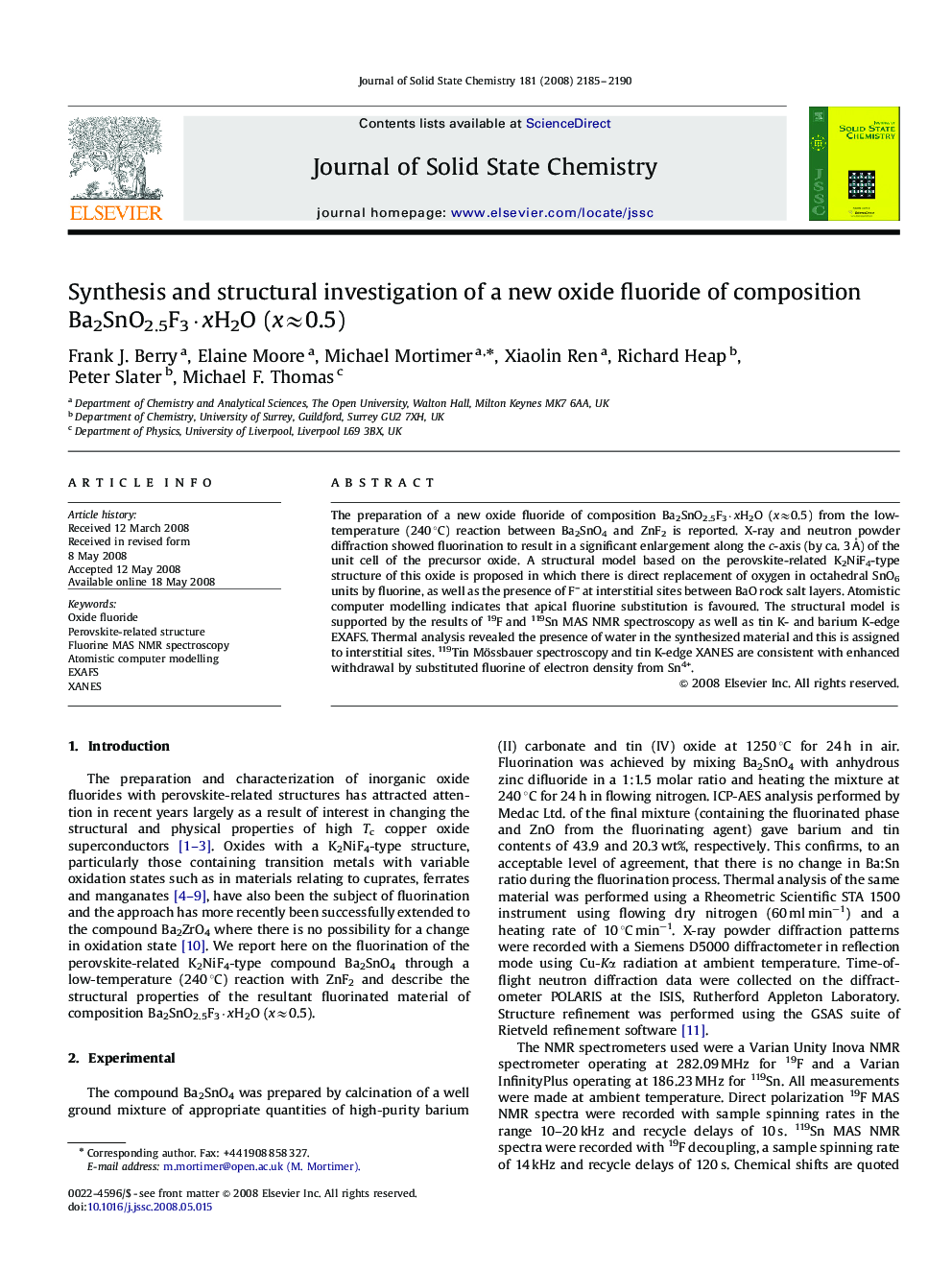| Article ID | Journal | Published Year | Pages | File Type |
|---|---|---|---|---|
| 1332708 | Journal of Solid State Chemistry | 2008 | 6 Pages |
The preparation of a new oxide fluoride of composition Ba2SnO2.5F3·xH2O (x≈0.5) from the low-temperature (240 °C) reaction between Ba2SnO4 and ZnF2 is reported. X-ray and neutron powder diffraction showed fluorination to result in a significant enlargement along the c-axis (by ca. 3 Å) of the unit cell of the precursor oxide. A structural model based on the perovskite-related K2NiF4-type structure of this oxide is proposed in which there is direct replacement of oxygen in octahedral SnO6 units by fluorine, as well as the presence of F– at interstitial sites between BaO rock salt layers. Atomistic computer modelling indicates that apical fluorine substitution is favoured. The structural model is supported by the results of 19F and 119Sn MAS NMR spectroscopy as well as tin K- and barium K-edge EXAFS. Thermal analysis revealed the presence of water in the synthesized material and this is assigned to interstitial sites. 119Tin Mössbauer spectroscopy and tin K-edge XANES are consistent with enhanced withdrawal by substituted fluorine of electron density from Sn4+.
Graphical abstractThe K2NiF4-type phase Ba2SnO4 has been fluorinated at 240 °C using ZnF2 to give a new oxide fluoride of composition Ba2SnO2.5F3·xH2O (x≈0.5). A model in which fluorine occupies both interstitial and apical substitutional sites in the structure of the precursor oxide is supported by spectroscopic and diffraction information, combined with atomistic computer modelling studies.Figure optionsDownload full-size imageDownload as PowerPoint slide
